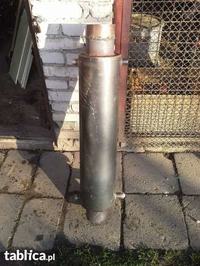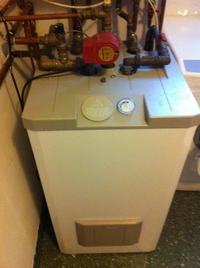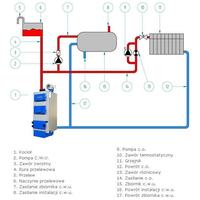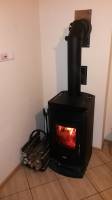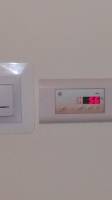Recently I have been thinking about installing an exchanger to the central heating boiler. Solid-fired boiler, fired from the top, regulator, thermometer, forced circulation,
oops sine - which is probably the most typical one possible.
I think so. The exhaust gases must have a certain minimum temperature at the chimney outlet to prevent tar condensation/soot deposition. I found information that the temperature should be no less than 70*C.
Due to the fact that the stove heats circulating water to 65*, the exhaust gas temperature is much higher. Of course, a lot of heat is lost in the chimney.
If an additional air-air exchanger was installed between the stove and the chimney and the sensor was placed at the top of the chimney. When the furnace is started, the sensor would be cold and the exhaust gases would go straight through the exchanger. However, if the outlet temperature exceeded 70*, the receiving fan in the exchanger would be activated
part of the heat.
In this way, only as much heat would be lost as necessary to maintain draft and prevent condensation. The rest would be used either to heat the basement room or to preheat the air supplied to the furnace.
And the question is: has anyone encountered such a solution? I looked for it, but I found it
only air-air and air-water exchangers for use in fireplaces. However, none of them was equipped with a sensor at the end
chimney.
oops sine - which is probably the most typical one possible.
I think so. The exhaust gases must have a certain minimum temperature at the chimney outlet to prevent tar condensation/soot deposition. I found information that the temperature should be no less than 70*C.
Due to the fact that the stove heats circulating water to 65*, the exhaust gas temperature is much higher. Of course, a lot of heat is lost in the chimney.
If an additional air-air exchanger was installed between the stove and the chimney and the sensor was placed at the top of the chimney. When the furnace is started, the sensor would be cold and the exhaust gases would go straight through the exchanger. However, if the outlet temperature exceeded 70*, the receiving fan in the exchanger would be activated
part of the heat.
In this way, only as much heat would be lost as necessary to maintain draft and prevent condensation. The rest would be used either to heat the basement room or to preheat the air supplied to the furnace.
And the question is: has anyone encountered such a solution? I looked for it, but I found it
only air-air and air-water exchangers for use in fireplaces. However, none of them was equipped with a sensor at the end
chimney.



